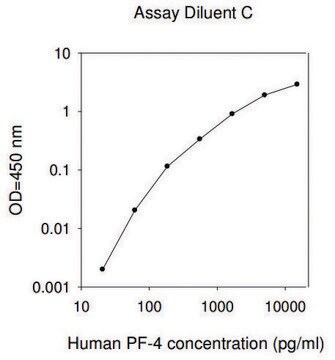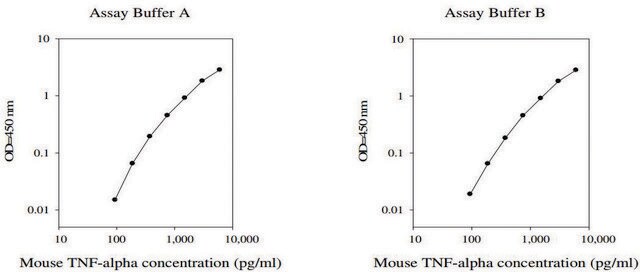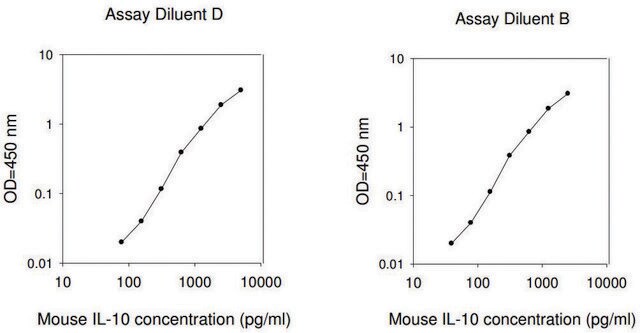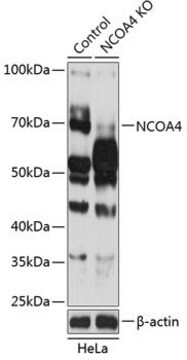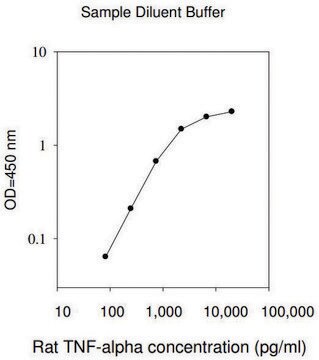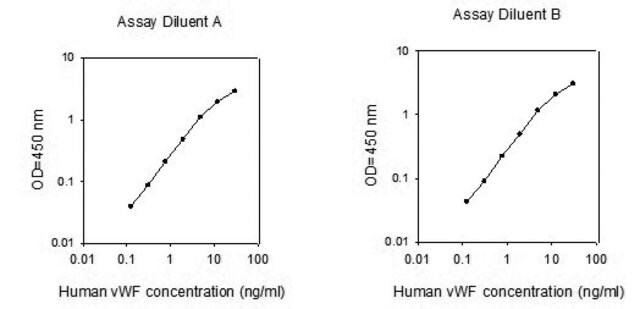RAB0120
Mouse CRG-2 / CXCL10 ELISA Kit
for serum, plasma and cell culture supernatant
Anmeldenzur Ansicht organisationsspezifischer und vertraglich vereinbarter Preise
Alle Fotos(2)
About This Item
UNSPSC-Code:
41116158
NACRES:
NA.32
Empfohlene Produkte
Speziesreaktivität
mouse
Verpackung
kit of 96 wells (12 strips x 8 wells)
Methode(n)
ELISA: suitable
capture ELISA: suitable
Aufnahme
sample type serum
sample type plasma
sample type cell culture supernatant(s)
assay range
inter-assay cv: <12%
intra-assay cv: <10%
sensitivity: 15 pg/mL
standard curve range: 8.2-2000 pg/mL
Nachweisverfahren
colorimetric
Versandbedingung
wet ice
Lagertemp.
−20°C
Angaben zum Gen
mouse ... Cxcl10(15945)
Allgemeine Beschreibung
C-X-C motif chemokine ligand 10 (CXCL10) is an inflammatory chemokine. It is essential for leukocyte trafficking. CXCL10 is also called interferon-γ-inducible protein 10, and is implicated in the cardiovascular disease pathophysiology.
The Mouse CRG-2 ELISA (Enzyme-Linked Immunosorbent Assay) kit is an in vitro enzyme-linked immunosorbent assay for the quantitative measurement of mouse CRG-2 in serum, plasma, cell culture supernatants and urine.
Immunogen
Recombinant Mouse CRG-2
Anwendung
For research use only. Not for use in diagnostic procedures.
Please refer to the attached General ELISA KIT Procedure (sandwich, competitive & Indirect ELISA)
Please refer to the attached General ELISA KIT Procedure (sandwich, competitive & Indirect ELISA)
Sonstige Hinweise
A sample Certificate of Analysis is available for this product.
Please type the word sample in the text box provided for lot number.
Please type the word sample in the text box provided for lot number.
Kit-Komponenten auch einzeln erhältlich
Produkt-Nr.
Beschreibung
SDB
Signalwort
Warning
H-Sätze
P-Sätze
Gefahreneinstufungen
Met. Corr. 1
Lagerklassenschlüssel
8A - Combustible corrosive hazardous materials
Hier finden Sie alle aktuellen Versionen:
Besitzen Sie dieses Produkt bereits?
In der Dokumentenbibliothek finden Sie die Dokumentation zu den Produkten, die Sie kürzlich erworben haben.
Pleunie van den Borne et al.
BioMed research international, 2014, 893106-893106 (2014-05-29)
C-X-C motif ligand 10 (CXCL10), or interferon-inducible protein-10, is a small chemokine belonging to the CXC chemokine family. Its members are responsible for leukocyte trafficking and act on tissue cells, like endothelial and vascular smooth muscle cells. CXCL10 is secreted
Julia Birkholz et al.
Human immunology, 75(6), 584-591 (2014-02-18)
Interleukin (IL)-27 is known to be increased considerably in cord blood (CB) dendritic cells (DCs) after TLR ligation. Previously, we demonstrated that also basal IL-27 levels are higher in CB DCs. Here, we examined effects of IL-27 on monocyte derived
Christina Hermanrud et al.
Journal of interferon & cytokine research : the official journal of the International Society for Interferon and Cytokine Research, 34(7), 498-504 (2014-01-22)
Interferon beta (IFNβ) is used as a first-line treatment in relapsing-remitting multiple sclerosis (MS). The occurrence of neutralizing antidrug antibodies (NAbs) against IFNβ may reduce treatment response. Therefore, clinical monitoring of NAbs is currently executed using bioassays, but several bioassays
Megan Crane et al.
The Journal of infectious diseases, 210(5), 745-751 (2014-03-04)
We investigated the relationship between microbial translocation, immune activation, and liver disease in human immunodeficiency virus (HIV)/hepatitis B virus (HBV) coinfection. Lipopolysaccharide (LPS), soluble CD14, CXCL10, and CCL-2 levels were elevated in patients with HIV/HBV coinfection. Levels of LPS, soluble
Liang Shao et al.
Heart and vessels, 29(5), 690-698 (2013-10-23)
Coronary artery disease (CAD), as a lipid-driven and inflammation-driven disease, has threatened thousands of patients' lives. Toll-like receptors, the most characterized innate immune receptors, have recently been demonstrated to play a key role in coronary artery disease, particularly Toll-like receptor
Unser Team von Wissenschaftlern verfügt über Erfahrung in allen Forschungsbereichen einschließlich Life Science, Materialwissenschaften, chemischer Synthese, Chromatographie, Analytik und vielen mehr..
Setzen Sie sich mit dem technischen Dienst in Verbindung.